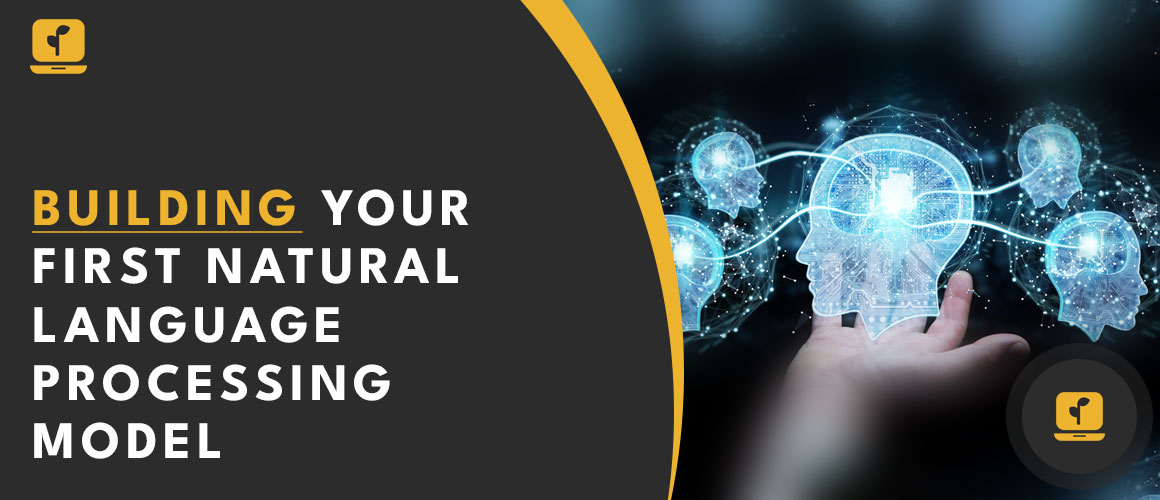As we move forward in the digital age, we encounter more and more challenges interacting with the vast amounts of data available in the world. One of the most significant of these challenges is understanding human language. This is where Natural Language Processing (NLP) comes in.
Table of Contents
In this article, I will guide you through the process of building your first NLP model. We will cover everything from what NLP is, why it’s important, and how you can get started. So, let’s dive in!
Introduction to Natural Language Processing (NLP)
What is Natural Language Processing?
Natural Language Processing, or NLP, is a subfield of Artificial Intelligence (AI) that deals with the interaction between computers and humans using natural language. It is an interdisciplinary field that combines computer science, linguistics, and machine learning to enable computers to understand, interpret, and generate human language.
Why Natural Language Processing is important?
In today’s world, we generate more text data than ever before. Emails, social media posts, documents, and other forms of written communication are ubiquitous. With this massive amount of data, it becomes impossible for humans to analyze and extract meaningful insights from it. This is where NLP comes in. NLP allows computers to analyze and interpret human language, making it possible to extract valuable insights from text data.
Types of Natural Language Processing
There are two main types of NLP: rule-based and machine learning-based. Rule-based NLP systems use a set of pre-defined rules to analyze and interpret text data. Machine learning-based NLP systems, on the other hand, use algorithms and statistical models to learn from data and improve their performance over time.
Getting started with Natural Language Processing
Understanding the basics of NLP machine learning
Before we dive into building an NLP model, it’s essential to understand the basics of machine learning. Machine learning is a subfield of AI that involves training algorithms to learn from data. In NLP, we use machine learning algorithms to train models to understand and interpret human language.
Modeling with NLP – A step-by-step guide
NLP modeling techniques and algorithms
To build an NLP model, we need to choose an appropriate modeling technique and algorithm. There are several techniques and algorithms available, including:
- Bag-of-words: This technique represents text data as a set of individual words, ignoring their order and context.
- TF-IDF: This algorithm calculates the importance of each word in a document based on its frequency and rarity in the corpus.
- Word embeddings: This technique represents words as vectors in a high-dimensional space, where words with similar meanings are closer together.
Deep learning for NLP
Deep learning is a type of machine learning that involves training neural networks to learn from data. Deep learning has revolutionized NLP in recent years, allowing us to build models that can perform tasks like language translation, sentiment analysis, and speech recognition with incredible accuracy.
Techniques for creating NLP models
Once we have chosen an appropriate modeling technique and algorithm, we can start creating our NLP model. The process involves several steps, including:
- Data collection: We need a large corpus of text data to train our model. This data should be diverse and representative of the language we want our model to understand.
- Data preprocessing: We need to clean and preprocess the data by removing stop words, punctuation, and other irrelevant information.
- Feature extraction: We need to extract relevant features from the text data to train our model. This could include bag-of-words, TF-IDF, or word embeddings.
- Model training: We need to train our model using the extracted features and a labeled dataset.
- Model evaluation: We need to evaluate our model’s performance using metrics like accuracy, precision, recall, and F1-score.
Tips for improving NLP models
Building an NLP model is not a one-time task. It requires continuous improvement and optimization to achieve the best performance. Some tips for improving NLP models include:
- Using more data: The more data we have, the better our model will perform. We should always try to collect more data and use it to improve our model.
- Fine-tuning: We can fine-tune our model by adjusting its hyperparameters, such as learning rate, batch size, and number of epochs.
- Ensemble learning: We can combine multiple models to create an ensemble model that performs better than any individual model.
Best practices for NLP modeling
To ensure the best performance of our NLP model, we should follow some best practices, including:
- Using a representative dataset: Our dataset should be diverse and representative of the language we want our model to understand.
- Preprocessing the data: We should clean and preprocess our data to remove irrelevant information and ensure that our model learns relevant patterns.
- Regularizing our model: We should use techniques like dropout, L1/L2 regularization, and early stopping to prevent overfitting and improve generalization.
- Evaluating our model: We should use appropriate metrics to evaluate our model’s performance and identify areas for improvement.
Applications of NLP in real-world scenarios
NLP has a wide range of applications in real-world scenarios. Some of the most common applications include:
- Sentiment analysis: Analyzing the sentiment of customer reviews to improve customer satisfaction.
- Chatbots: Creating chatbots that can understand and respond to customer queries in natural language.
- Machine translation: Translating text from one language to another.
- Speech recognition: Converting speech to text for applications like voice assistants.
Conclusion
Natural Language Processing is a fascinating field that has the potential to revolutionize the way we interact with text data. Building an NLP model may seem like a daunting task, but by following the steps outlined in this article, you can get started on your NLP journey.
Remember to choose an appropriate modeling technique and algorithm, preprocess your data, and continuously improve your model to achieve the best performance. With these tips and techniques, you’ll be well on your way to building your first NLP model.












